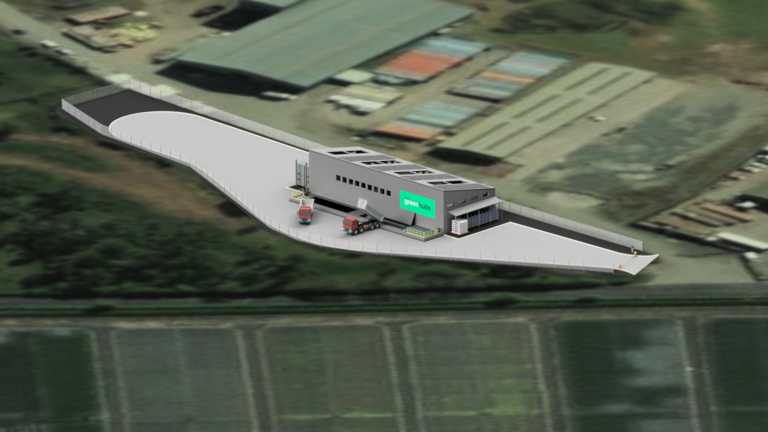Pollution of the River Wye has gained national attention, with poultry farms in the firing line. Now a new firm is claiming it can help solve the problem of what to do with poultry litter.
Algal blooms in the River Wye are causing wildlife to die and the quality of the water to deteriorate. The causes are multiple, but they include run off from farm land in the catchment, which has been fertilised with poultry litter that come from the hundreds of poultry farms in the area.
Avara Foods last month announced all of its poultry litter would now be exported from the catchment for use elsewhere. It has partnered with Gamber, which will ensure none of it ends up on farmland in the Wye catchment.
But other poultry producers may be able to take advantage of another solution being developed by a new company called Onnu.
Onnu, which describes itself as a ‘greentech’ company, is in the process of buying land in Herefordshire. It is planning to build a ‘pyrolysis-based hub’, in which to process poultry litter.
So far it has not obtained the relevant planning permissions, but the company says it is acquiring a disused industrial plot in Herefordshire which is adjacent to a number of other light-industrial businesses. The proposed hub will be completed by next April and is the size of a typical barn, being two stories tall and approximately 20 by 40 metres with a facility for feedstock storage.
Pyrolysis is a process in which biomass is heated without oxygen, and it can transform poultry litter into a solid biochar which has several applications. According to Onnu, when used as a fertiliser, phosphorous is locked into the biochar preventing the run-off that has caused so much damage in the Wye Valley.
“Our hubs are far less intrusive than alternative forms of litter treatment – they will be sited close to poultry farms to minimise transport costs and traffic disruption; and, as they are sealed systems, emissions will be negligible,” said Michael Douglas, Onnu’s director of projects. “In fact, the only impact our hubs will have on the local environment will be to enhance the quality of our river systems, and combat climate change.”
The claims are certainly big, and are matched in scale by Onnu’s ambitions. It says it wants 16 of the hubs to be built in the area eventually.
What is pyrolysis?
Pyrolysis – the combustion of organic matter in the absence of oxygen – transforms poultry waste into biochar, a stable, slow-release fertiliser that can be spread safely on farmland without causing run-off.
“We are being asked to choose between a unique ecosystem in an area of outstanding natural beauty and an industry that contributes a billion pounds to the River Wye,” said Giles Welch, the entrepreneur behind Greentech firm Onnu. “Why shouldn’t we aspire to have both? The net result of pyrolysis is a win-win: it’s great for the poultry farmer – and a huge positive for the environment.”
Pyrolysis is a self-sustaining process that uses the energy in the poultry litter to dry it and heat the resulting feedstock until it decomposes into biochar. The process also locks all the carbon contained in the poultry litter into the biochar: this therefore serves as a carbon sink and qualifies for carbon credits. In most cases, more energy is created than is needed for the pyrolysis process: this surplus can then be provided as a green energy source to decarbonise other business operations.
Biochar produced from poultry litter is only 5% of the weight of the original, greatly reducing requirements for storage, transportation, and land application. As with fertiliser derived from poultry litter, biochar delivers key nutrients (including phosphorus) to the soil, but the release is slower, eliminating the threat of run-off and ecological damage.
“The poultry litter has to end up somewhere other than in our rivers so, for the farmer, pyrolysis makes a virtue of a necessity,” explained Welch. “The phosphorous is captured in a solid biochar that can safely be spread on land without causing run-off or emitting greenhouse gases like nitrous oxide. The biochar also captures carbon that would otherwise be released into the atmosphere.”


